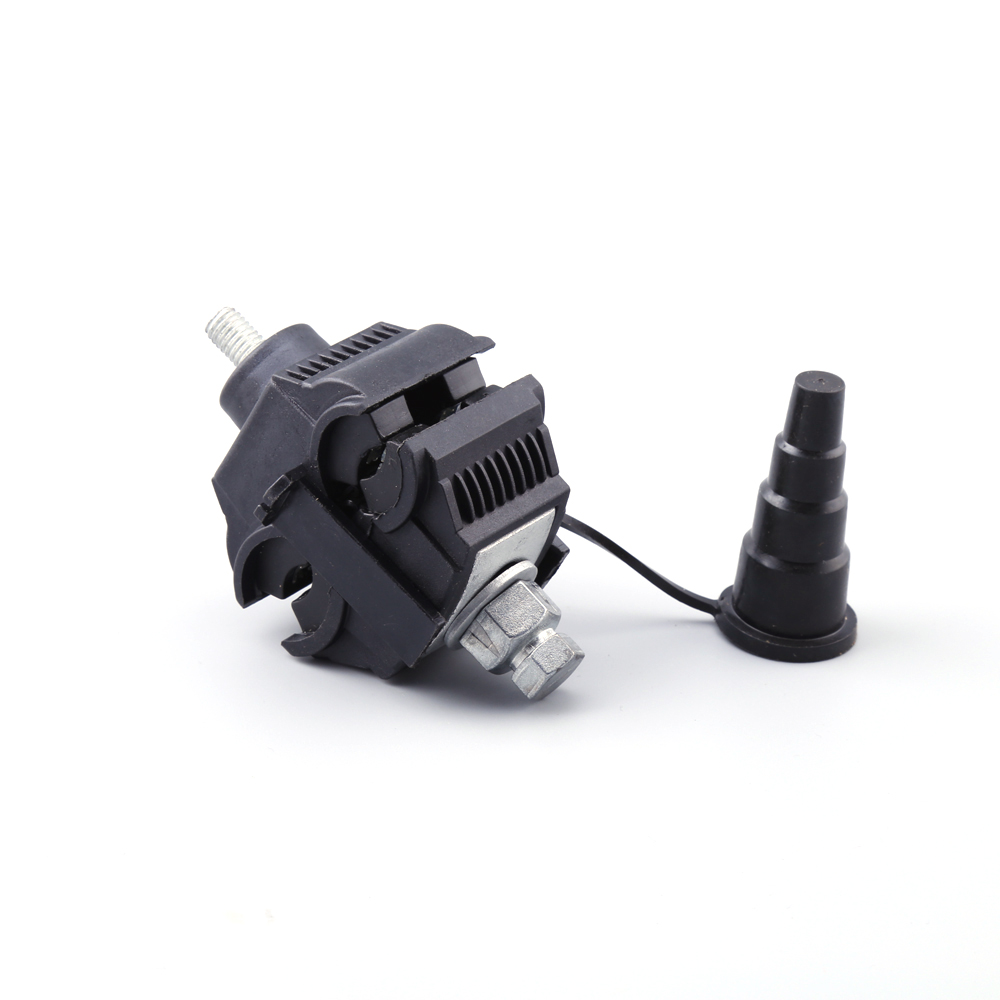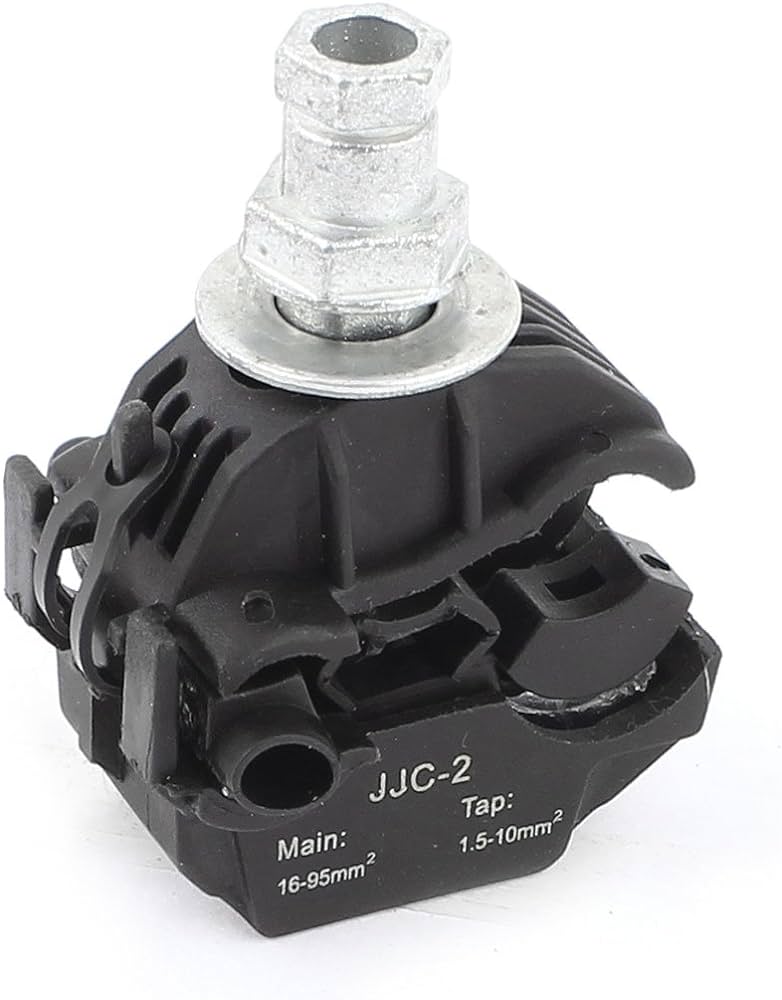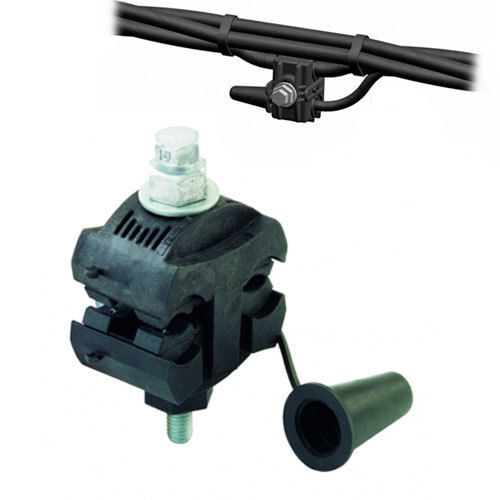
An insulated piercing clamp (IPC) is a specialized tool used to make tap connections in transmission lines. It makes it possible to connect a branch line to the main line without removing the insulation from the conductors of the main line. Using the connectors expedites, secures and ensures a reliable installation. This is in contrast with normal methods that require splicing and stripping. The branch line conductor and the main line conductor have cases of the insulated piercing clamp. For robustness and conductivity, they are from UV-resistant thermoplastic with tinned copper inserts. IPCs use nuts and steel bolts to fasten things. Depending on the use, different materials and unique designs are necessary. They serve a purpose in street lighting, telecommunications and electrical systems, among other uses..
The insulated piercing clamp’s functions
The insulated piercing clamp helps to connect branch lines to a main line by means of tap connections. This is without removing or cutting the insulation from the primary line cables. Because they guarantee dependable, safe and effective electrical connections, they are essential to electrical work. The purposes of an insulated piercing clamp in overhead transmission lines are as follows.

- Insulation – wire insulation has protection from deterioration by insulated piercing clamps, which allow electrical connections. By doing this, the danger of short circuits and exposure to bare conductors.
- Versatility – this designs accomodate different wire diameters and types. This covers solid and stranded conductors on overhead power lines. They can now operate in a variety of electrical applications as a result.
- Temporary connections – the connectors are also functional in short-term electrical connections. This is the case when debugging or testing. This will enable fast and simple connections without requiring long-term electrical modifications.
- Electrical connection – the primary purpose of the clamp is to provide an electrical connection. It creates a safe electrical connection between wires without requiring insulation to be removal.
- Safety – the insulated handles of the clamps offer protection against electric shocks, ensuring safety.
- Dependability – they establish a safe and dependable electrical connection as well. This is to keep electrical circuits continuous and ensure proper conductivity.
Insulated piercing clamp components
Together, the IPC’s parts enable a dependable and secure connection between conductors. Select the appropriate IPC size and type for your particular application. This is to guarantee both safety and greatest performance. The common parts of insulated piercing clamps are as follows.

- Housing – the UV-resistant thermoplastic used to make the clamp’s outer shell provides durability and insulation. It keeps the clamp from drawing electricity and housing all the other parts.
- Piercing teeth – these are from tinned copper, a conductive substance. They are sharp and spring-loaded. It is their responsibility to pierce the conductor’s shielding and reveal the bare metal underneath.
- Conductor ports – these are holes in the housing through which the conductors can pass through the clamp. They offer designs tailored to particular conductor types and sizes.
- Tightening teeth – the piercing teeth pierce through the insulation by the tightening mechanism, which exerts pressure on them.
- Insulating gel – for added protection and moisture resistance, insulating gel is inside the clamp’s housing.
Applications for insulated perforation clamps
Insulated piercing clamps provide a flexible and non-invasive way to access power lines. They make it simple to install and adjust electrical connections. Expanding power distribution networks creates more flexibility with the use of insulated piercing clamps. They make it possible to integrate extra circuits, machinery and monitoring tools. The different uses for the insulated piercing clamps are as discussed below.

- Street lighting – insulated piercing clamps connect street lighting systems to power cables. The clamps give the street lighting circuits a safe place to connect. This will enable dependable and effective lighting.
- Installations of secondary lines – the clamps link secondary lines by tapping into the current power lines. Power distribution to extra structures, installations or equipment get support from secondary lines.
- Insulated piercing clamps – these work in temporary installations to establish short-term connections. These include establishing temporary connections to power sources and putting up power supplies for outdoor events.
- Electrical meters and monitoring – these equipment mount to electricity lines using clamps for monitoring. Accurate power monitoring and measurement of electrical parameters is from possible by the clamps. These are comparable to power quality, voltage and current.
- Insulated piercing clamps tap – these tap into electrical lines to install equipment for communication. They consist of things like traffic signal systems, data transmission equipment and telephone connections.
- Repair and fault detection – the clamps are occasionally employed in repair and fault detection procedures. This is from strategically tapping into electrical cables.
Insulated piercing connector types
The types of electricity lines, voltage levels, installation specifications and local laws all influence the clamps’ designs. Seek advice from licensed electricians to guarantee appropriate installation and choices. The most popular varieties of insulated piercing clamps are as listed below.

- Bolted insulated piercing clamp – the most popular type of piercing clamps are the bolted insulated ones, which have a housing with a bolt and nut tightening mechanism. They are appropriate for low and medium voltage applications and provide a broad range of conductor compatibility.
- Compression insulated clamps – these clamps puncture the insulation by applying pressure and compressing the clamp with the help of a hydraulic tool. Also, they offer a more even and reliable connection than bolted clamps.
- Wedge-based IPCs – these have a wedge mechanisms pierce the insulation by pushing the piercing teeth through the material. They are perfect for applications where space has limitation because they are lightweight and compact.
- Shear-bolt IPCs – these feature a bolt that breaks off after reaching a specific torque. This is to ensure proper tightening and tamper resistance.
- Provision of services – the purpose of a drop pierce clamp is to access subterranean electrical wires. Also, they puncture the cable’s insulation while preserving a safe and dependable electrical connection.
- Insulated piercing tap connector – an extra circuit connects to existing electrical lines using an insulated piercing tap connector. They work in distribution and telecommunications applications.
- Insulated ground clamps—create grounding connections. Additionally, they make it possible to make solid grounding connections without having to remove the insulation from grounding wires.
- Clamps for piercing underground lines – these clamps pierce the cable’s insulation while preserving a safe and dependable electrical connection.
- Tension clamps – these devices are useful in situations when it’s necessary to connect to tensioned electrical lines. Transmission and distribution lines are examples of this.
The difficulties and problems with the insulated piercing clamp
There are drawbacks to employing the perforated insulated clamps above its many benefits for electrical operations. There are some issues with these types of clamps that need to resolve. To ensure safety and adhere to best standards, these challenges must be carefully considered, planned for and met. This will guarantee a flawless clamp installation and operation. Here is a discussion of a few of the typical problems.

- Perforating clamps – clamps with insulated shanks should be compatible with the types of wire, insulating labels and corresponding sizes utilized in that application. In the end, it’s beneficial to make sure all the cables are compatible.
- Installation – for consistent communication, corner cord connection cells must install correctly. Safety is still another crucial concern. It may not be hard to place the clamps, but doing so may need some experience.
- Environmental factors – as a result, insulated piercing clamps, which work outside the building and exposed to such risks. These elements include corrosive materials, temperature swings, dampness and UV radiation. The elements may affect the task of conserving them and may require additional steps.
- Maintenance – checking and cleaning of the insulated clamps is necessary. This is because it keeps the clamps in the best condition as well on make it safe to use. The technician may have to do that by cleaning, fastening the loose elements or replace worn parts. The maintenance problem could be the most major one in situations where it is difficult to get many clamps in contact with a huge number of clamps.
- Overcoming Insulation Resistance – the clamps may contribute to their inability to pass through certain types of insulation. As a result, depending on the circumstances, it may interfere with the link’s integrity and quality.
frequently asked question
There are various types of IPCs used in overhead transmission lines. These include bolted, compression, wedge-based, shear-bolt and insulation displacement connectors.
Consider factors such as conductor size and type, voltage rating, environmental conditions, installation needs and compatibility.
Improper installation can lead to loose connection, electrical shock or equipment damage. Choose the correct IPC and follow installation instructions carefully.